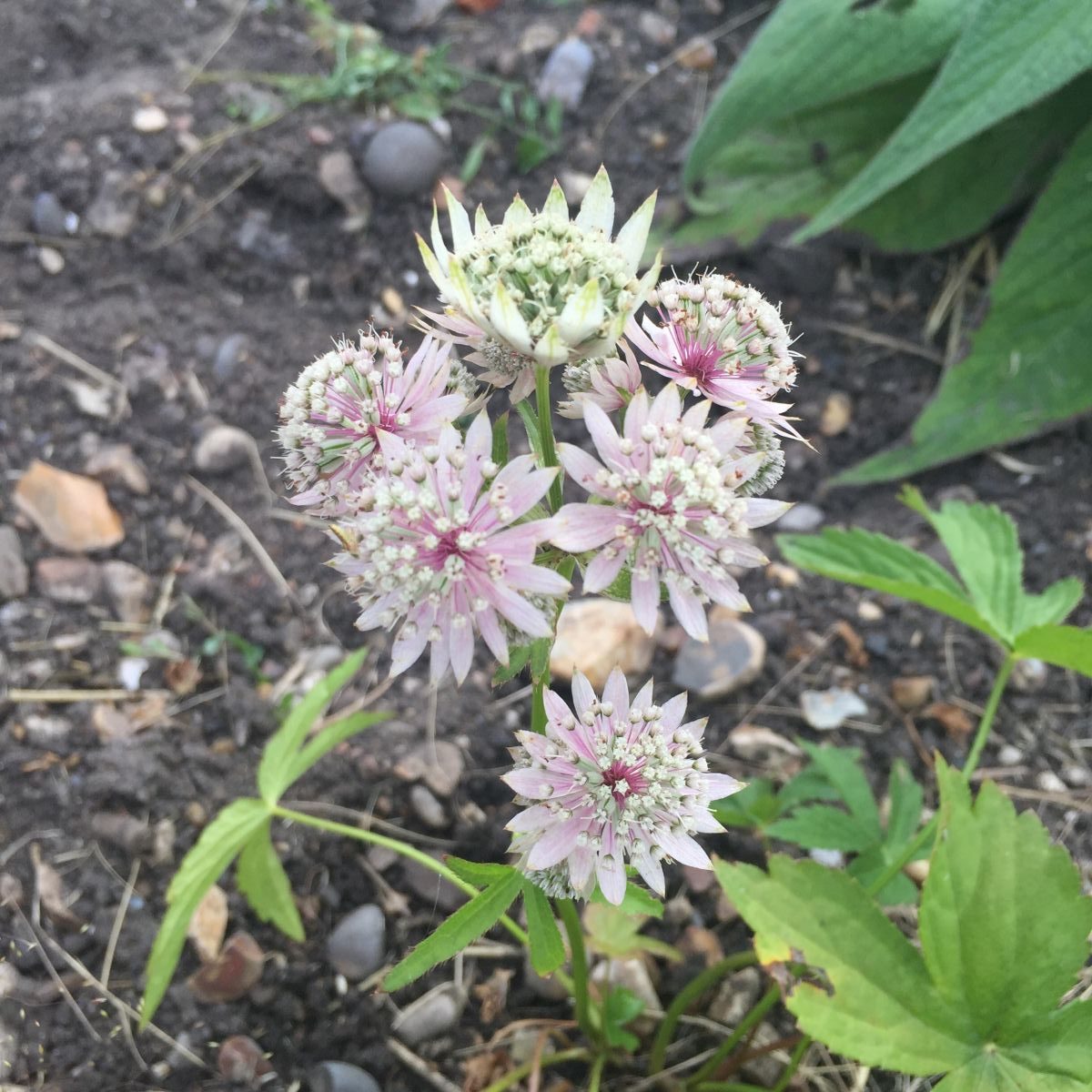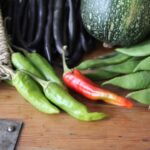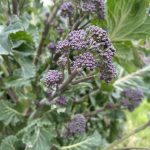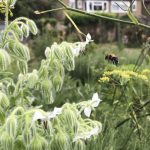It’s been a year since I was given my 125 sq metre allotment and what a wonderful, soulful, reflective, fun, heartening year it has been! It’s been a hell of a lot of hard work which, while not converting into an equal output of produce, has satisfied my need to grow-our-own tenfold.
Before and after
When I arrived I found a plot that had been cared for lovingly for twenty years but full of twenty years’ worth of equipment and weeds. With no car I’m still removing some of it now. It is neat however, and filled with plants (see top photo).
Has the allotment been productive?
You bet your courgettes it has! Here’s a small selection of what we’ve had:
My allotment has been super productive and continues to be going into winter with brussels, cabbage, celeriac, kale, chard and broccoli to come. While we haven’t replaced all of our shop bought vegetables yet, we certainly now supplement many of our meals with organic veg across the year.
My gardening principles
- Organic but integrated pest and disease control – this means I am organic 99%-ish of the time, but I am not completely against using certain (not all) chemicals when a serious issue arises. To explain, I have used only organic fertilisers and chemicals all year except for 10 sprays of glyphosate on serious bindweed. I do use the organic Ferric phosphate slug pellets, I do use organic contact bug spray in extreme emergencies, I do use organic fertilisers like liquid seaweed, I do use nematodes, I do use some fungal control sprays in emergencies only. I don’t use systemic bug spray, I never use methaldehyde slug pellets – in fact, of all the chemicals it’s the pesticides, the ones that kill stuff, I am the most against.
- Peat-free – I never buy peat based composts because they are completely unnecessary no matter what anyone says. Instead I buy rotted manure, peat free compost and of course make my own compost.
- No-dig – in our garden I never dig the raised bed and the plants and wildlife love it. So I’m following the same principle and Charles Dowding’s lead with no-dig beds.
- Designer – this year was the ‘get ready, clean up and give it a go’ year, but I believe in beauty in everything. I’m striving to make my allotment more designed and lovely in future. It’s possible to have both a productive and a beautiful allotment.
Things that grew well
- French beans, Phaesolus vulgaris F1 ‘Cobra’ (5 plants) – holy smokes! French beans pump out the goods like nobody’s business all summer long. At one point we had so many French beans we had more than the two of us could eat for an entire fortnight. Everyone should grow French beans to save money.
- Courgette, Cucurbita pepo F1 ‘Defender’ (3 plants) – tasty courgettes that grow very fast, with many being produced every week.
- Florence fennel, Foeniculum vulgare F1 ‘Victorio’ (6 plants) – I only grew a small row of these but they grey well. They’re reported to bolt easily, although I found them fine. Tasty and money saving.
- Celeriac ‘Monarch’, Apium graveolens var. rapaceum (6 plants) – they’ve done well. In Lia Leendertz’s allotment book she recommends only growing around six of these and I have to say that advice is spot on.
- Brussels sprout, Brassica oleracea F1 ‘Crispus’ – we haven’t eaten any yet but the plants have grown really strongly.
- Stepover apple trees (3 maiden whips) – I have three stepovers of different cultivars and they’re settling in very nicely so far. The training I’ve done seems to be going to plan.
- Leek, Allium porrum ‘Nipper’ – a really delicious small leek that grows quickly. We never really ate leeks before but will more in future as these were very tasty.
- Artichoke, Cynara cardunculus F1 ‘Green Globe Improved’ – I grew mine from seed even though I only wanted one plant but it’s growing strongly within my garden design test bed.
- Lettuce, Lactuca sativa ‘Nymans’ – these very dark, crisp and shiny purple leafed lettuce grew wonderfully.
- Broad bean, Vicia faba ‘Aquadulce Claudia’ – I love these broadbeans, they taste amazing and are easy to grow.
- A variety of potatoes, Solanum tuberosum – I grew seven different varieties of potatoes. They all grew really well. Taste was a different matter. Some were the promised ‘gold’ of grow your own, with a buttery taste and texture a million miles from the shop bought ones. Others were dry and powdery. Next year, it’s the nice ones only.
- Raspberries, Rubus idaeus – I was lucky that the plot came with (I found out in summer) summer fruiting raspberry canes and my sister in law gave me some too. We had an abundance of raspberries, which we love.
- Broccoli, Brassica oleracea – I’m growing a few different types of broccoli and they’re all doing brilliantly. Very tasty.
- Onions, Allium cepa – I grew three types of onion, brown, white and red. They all performed really well and are tasty to eat and storing well.
- Peas, Pisum sativum – various varieties were grown and tasted great. I had trouble with them germinating which I am putting down to mice. Next year I will sow in trays and then plant out.
- Spring onions – I didn’t sow many spring onions but they grew well an were nice.
- Rhubarb – came with the plot and is growing well.
- Chard – apart from making the mistake of eating some raw and burning my mouth with the acid, once cooked this was delicious and easy to grow.
- … and loads of other stuff – I’ve grown all sorts of things with the allotment space, like cabbages, mange tout, basil, Nasturtiums and Calendula to defend the veggies from bugs, sweet peas, mint etc. It’s all gone well.
Dahlia trial bed
I love Dahlias (if you know me you’ll be rolling your eyes!) and wanted a bed to try new cultivars each year. Let’s just say this has gone well. I’m disappointed that some of the cultivars are not the correct ones I’d ordered – so the colours and shapes are off – but that will be corrected next year. Regardless, the Dahlias have grown really well giving me a non-stop supply of buckets of flowers to bring home. More on this in the future!
Design bed
Part of my allotment is a dedicated garden design experiment to try out new ideas. This year I’ve been going crazy for plant communities, grasses and prairie plantings, which is what I’m currently playing with. Almost every plant is seed grown so it’s only next year – its second year – that it will be ready. I am especially pleased with the result already however, it’s like nothing I have seen elsewhere yet and I love it (for good or bad).
Things to improve
- Yield – next year, now I know much more, I will focus on yield to increase the amount of the veg we like, and cut out the stuff we didn’t like. For instance, I won’t grow purple carrots again – blurgh..! But I will grow many more carrots.
- Harvesting – I was so focussed on the growing last year I have messed up quite a few times on the harvesting. Namely that some things, like French beans, Raspberries and Broccoli have a small window (as little as one day) in which they’re ready to eat and then go over becoming inedible. As I can only get down the allotment once per week this is a problem I need to work on.
- Transportation – my allotment is miles away, it takes 40 minutes by train and carrying stuff to and fro is an absolute nightmare. Next year I need to save up to get a car somehow.
- My own compost – I hadn’t anticipated a major lack of waste plant material on my allotment. For some reason I had hardly any waste plant material to put onto my waiting compost heaps. Not sure how I’ll improve on this next year but I will somehow! I need the compost.
- Asparagus – I’ve set side a large area to asparagus. They’re growing well and this is their first year, so it’s expected they’ll look a little weedy as they establish. However, next year I need to concentrate on really boosting their growth and seriously keeping them weed free and giving them some support, ready for their first harvest in year three (2018).
- Grape vine – I missed the pruning window last year and didn’t water enough in summer, so I’ll correct both things next year.
- Beetroot and radishes – bit random but I don’t know why beetroot and radishes elude me no matter where I grow them! Raised bed in the community garden, in our garden, in the allotment. For beetroot the plant grows but the root doesn’t expand. For radishes they grow but are so slug eaten they’re inedible.
- Herbs – I’d like to grow many more down the allotment, especially perennials to keep the workload down.
’til next year folks!
I’d love any tips and advice from other gardeners if you have any, there’s always more to learn 🙂














































Sounds like you’ve had a great year Jack. I’m interested that you use organic slug pellets. Sometimes I think my allotment is more of a mollusc sanctuary than a growing area, but I refuse to use conventional slug pellets (never have used them), so this year I’ve been picking the blighters off by hand, losing some crops and swearing a lot. Did you find the pellets you used effective?
Hi Nic, I do find the organic pellets effective but you do have to be vigilant at keep replenishing them, especially if it’s been raining. I’ve found also that a couple of doses of nematodes a year reduce the slug population enough. And finally, keeping the weeds down and spacing crops so there’s less sheltered walk/slime ways they can use to get to the crops.
I never have a bite free plant though but I don’t mind that as long as they aren’t ravaged as you can just cut around.
I’d be grateful for other tips though because like yours, my allotment is a mollusc sanctuary too, not helped by unkept surrounding plots.
I find removing by hand can help but you’d be doing it forever as overnight they come back. Beer traps I’ve tried in our garden and they’re certainly effective but too small to actually work with the size of an allotment.
Last time I tried beer traps (with gluten free beer as that’s the only kind in our house) I grew a lovely crop of orange fungi in my veggie patch!! ☺ I might try nematodes and organic pellets then. On my blog this weekend, I’m talking nematodes too – but this time for indoor sciarid fly…
im in the same position.got my allotment late in april so have done a part for potato’s.hard work.but fun.the plot has many old rubbish left over.so your idea to concentrate on one thing is a big hekp
Good luck Tony! A bit at a time and you’ll be amazed how quickly it all comes together